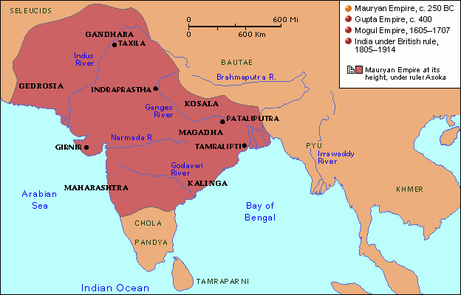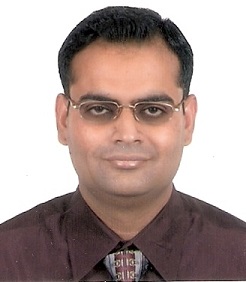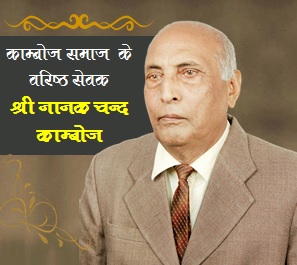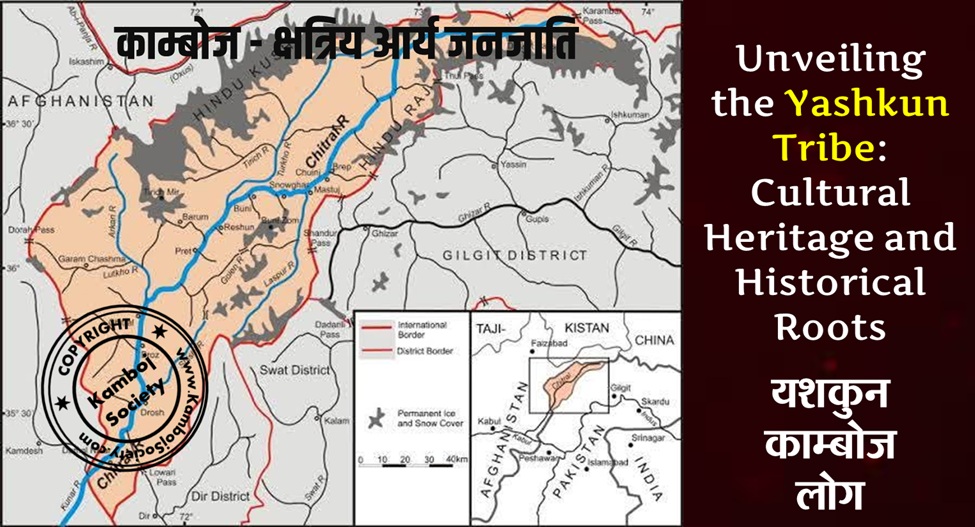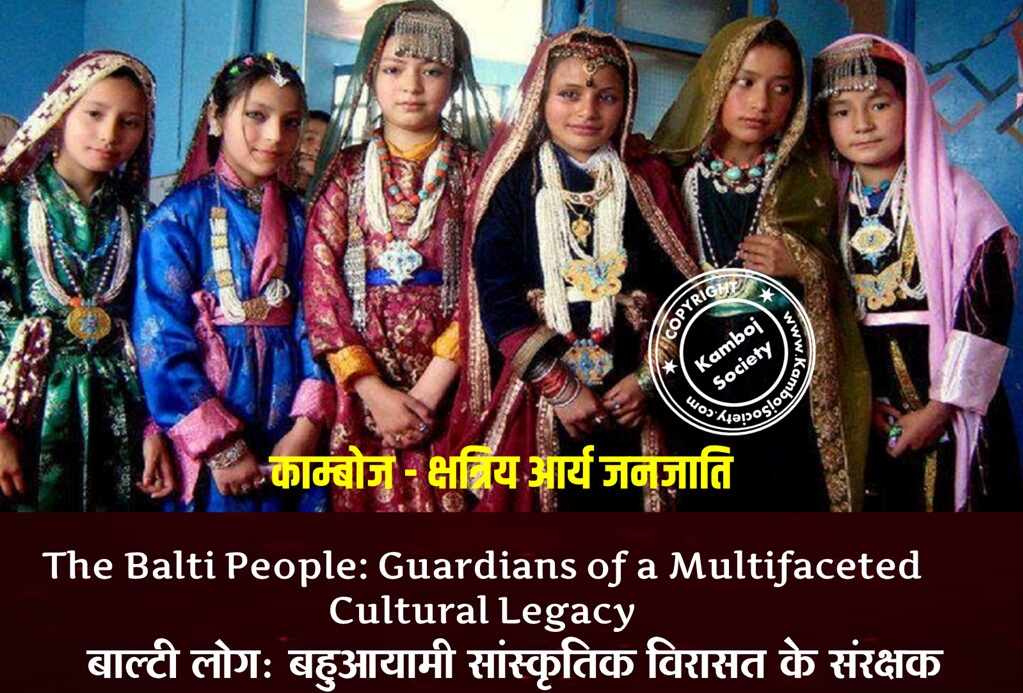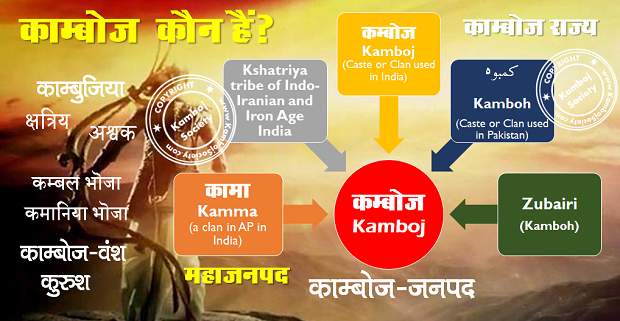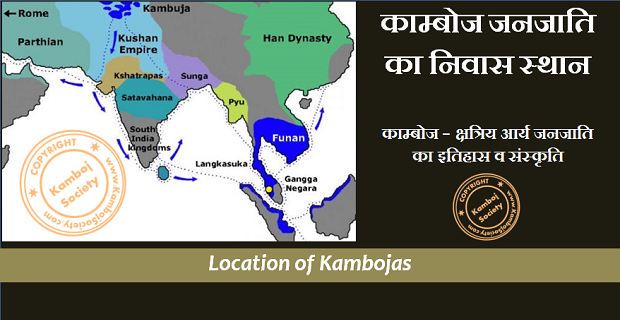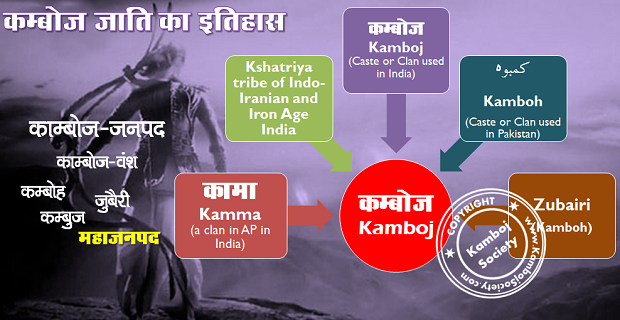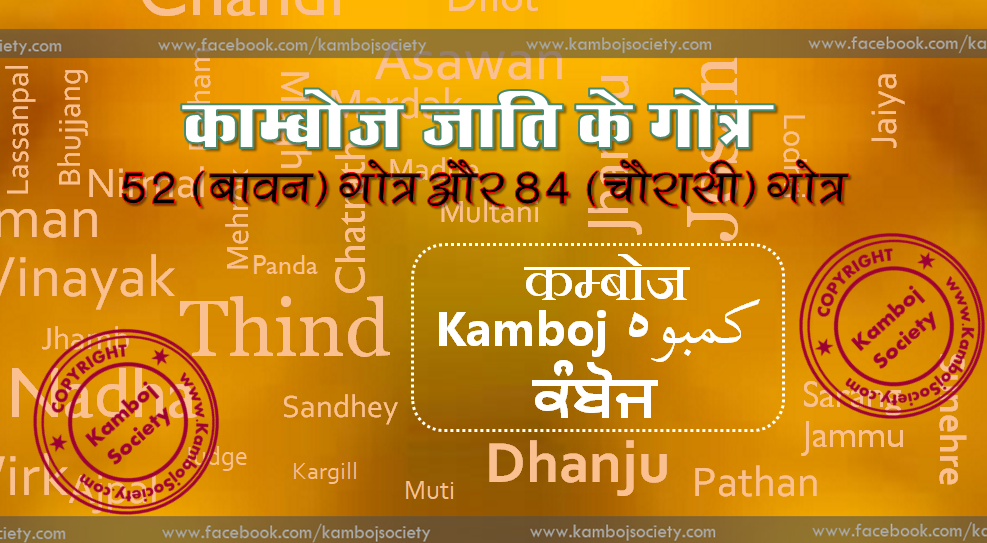If it is true that name Sa?igupta and Chandragupta refer to same historical personage, then it must also follow that Chandragupta was native of Uttarapatha (north-west division) and belonged to some influential family of the Asvakas, west of Indus.[1] He initially started his career as war-leader or military adventurist and led a corporation of warriors to the aid of Persians. It is well known from classical sources that mercenary soldiers from north-west frontiers were frequently requisitioned by Persian rulers of Achaemenid line. It is also clear from a reliable contemporary witnesses such as Kautiliya who powerfully attests that the Kambojas and other north-west frontier people, at this period, lived by varta as well as by the use of weapons (Varta-shastropajivi). P??ini, in his Ashtadhyayi, includes the Ashvayana and Ashvakayana [2] sections of the Kambojas into republican people and styles them as Parvata Ayuddhajivi Samghas (mountaineer or highlander fighters's republics).[3][4][5] The Ashvayanas and Ashvakayanas of P??ini are the Aspasioi and Assakenoi of the classical writings and the Asvakas of the Mahabharata as well as of the Puranas. The Asvakas formed a section of the greater Kamboja tribes who had spread on both sides of Hindukush mountains. They were exclusively engaged in horse-culture, were known as distinguished breeders of notable horses and famous as expert cavalry.[6] See Ashvakas. One Buddhist tradition states that Chandragupta's father was killed in a border-clash and his pregnant wife sought refuge in Pushapapura where she gave birth to Chandragupta.[7] Pushapapura is an ancient name for Peshawar in north-west frontier land powerfully attested in the ancient inscriptions belonging to the Saka age i.e. Christian times.[8] But the belated Ceylonese Buddhist text Mahavamsatika (10th century AD) seems to have confused this Pushapapura of northwest with the eastern Indian Pushapapura (Pataliputra, also called Kusumpura) and has erroneously linked Chandragupta's birth to Pataliputra [9] which does not seem to bear closer scrutiny. Further, the chattel slavery was a custom prevalent only in north-west frontier countries. Majjhima Nikaya (5th century BCE) attests that in the lands of the Yavanas, Kambojas and some other frontier nations, there were only two classes of people...Aryas and Dasas...the masters and slaves. The Arya could become Dasa and vice versa.[10] There is, however, no evidence that slavery was practiced in Indian mainland/Madhyadesa and/or in Eastern India. Rather, Megasthenes, the Greek Ambassador to the court of Chandragupta, while writing on "Pataliputra and Manners of the Indians", specifically writes that: "The Indians do not even use aliens as slaves, and much less a countryman of their own".[11] At another place Megasthenes further observes: "Of several remarkable customs existing among the Indians, there is one prescribed by their ancient philosophers which one may regard as truly admirable: for the law ordains that no one among them shall, under any circumstances, be a slave, but that, enjoying freedom, they shall respect the equal right to it which all possess: for those, they thought, who have learned neither to domineer over nor to cringe to others will attain the life best adapted for all vicissitudes of lot: for it is but fair and reasonable to institute laws which bind all equally, but allow property to be unevenly distributed".[12] "Even Diodorus Seleucus notes with approval the (idealized) slaveless Indian society".[13][14]
[caption id="attachment_1438" align="alignnone" width="512"]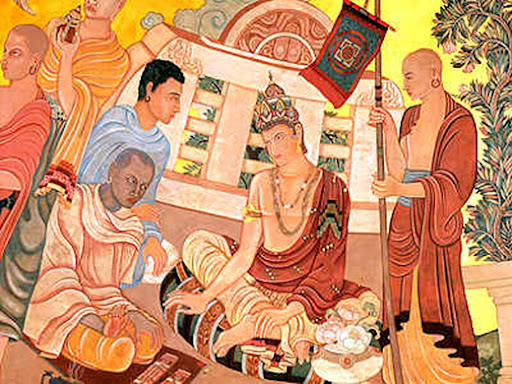 Chandragupta Maurya[/caption]
Interestingly the Buddhist texts also refer to Chandragupta as belonging to Kshatriya lineage [15] which means that Chandragupta was regarded as noble or Arya... and at the same time Buddhist text claims that Chandragupta's Arya uncle/relative living in Pataliputra (in Magadha, the heart of India), had sold this Arya Chandragupta (a child) for few takkas as a slave to a cowherd. And the cowherd sold him to a hunter, who in turn had sold him to Kautilya–a native of Taxila. Thus, this Buddhist claim strongly militates against all the above evidence of the Greeks as well as the Buddhists themselves. On the other hand as noted above, the people of Bahlika, Madra, Kamboja, Gandhara lands had developed a type of chattel slavery (which was not prevalent in main India/Magadha).[16] Thus, since the Chattel slavery is specifically documented to have been practiced in the north-west alone including the Yonas/Kambojas/Gandharas etc., this very historical fact surely means that sales/purchases of a child Chandragupta by a cowherd- a hunter, and later by Chanakya (Kautilya), must have taken place in the Gandhara/Kamboja land (probably near/around Peshawar=Pushpapura)) and not in the Indian mainland like Magadha/Eastern India as erroneously claimed by the belated Buddhist text Mahavamsatika. This indicates that Chandragupta was indeed a native of Kamboja/Gandhara and not of Magadha or east India.
Srimad Devi Bhagavatam of Markandeya Purana brackets the Kamboja and the Maurya clans together as allied warrior clans and calls them both as Asuras (Ahuras?).[17][18][19] There are also epic references to Maurya king Ashoka which style him as Maha-Asura---i.e. great Demon.[20] Similarly, king Chandravarma Kamboja who finds mention in the Adiparva of the epic Mah?bh?rata is also styled as powerful Asura or a Demonic ruler, the incarnation of Chandra, foremost among the sons of Diti.[21][22] Same Adiparva of Mahabharata also styles king Ashoka Maurya as an incarnation of Asva (or Asvaka) and a son of Diti [23] which seems to connect him or his lineage to the Asvakas (Kamboja section) of north-west. Manusmriti [24] as well as Mahabharata [25] both style the Kambojas etc. as Vrishalah.[26] On the other hand, Sanskrit play Mudrarakshasa of Visakhadatta styles Chandragupta as Vrishala. Marcus Junianius attests that Chandragupta had a humble origin. It is notable that no ancient source attests Sa?igupta to be ruler of any kingdom in the north-west prior to his appointment by Alexander as a governor of Aornos country of the eastern Asvakas. It is all merely scholars' speculation that he was perhaps a ruler of some hill state west of upper Indus and came of a royal background. As said above, he was in all probability, a remarkable military adventurer of non-royal background, hence Justin's statement that he rose from a commoner is perfectly compatible. Buddhist literature such as Mahavamsa relates Mauryas to Ksatriya lineage.[27] On the other hand, P??ini's Ashtadhyayi,[28] Manusmriti,[29] Mahabharata,[30] Harivamsa [31] and numerous Puranas etc. also list the Kambojas as Ksatriyas.
From the foregoing discussion, it appears very likely that Chandragupta alias Sa?igupta belonged to some Asvaka branch, west of upper Indus, and hence more probably, he may have been from a Kamboja background. During/or immediately prior to this time in history, the Kambojas are known to have been very powerful people in the north-west as is indisputably attested by contemporary sources like Rock Edicts of king Ashoka as well as the Arthashastra of Kautiliya & the Ashtadhyayi of P??ini. Only about a century and a half earlier, Kamboja had evolved into one of the two prominent Mahajanapadas of the north-west. It is also notable that after the adoption of Buddhism by king Ashoka Maurya, entire resources of his vast empire were directed to the drive of propaganda especially in the north-west which also alludes to his concerns with and affinities towards the north-westerners.[32][33][34] Last but not the least, it was only with the warlike Kambojas (=Ashvakas) [35] and other north-western tribes like the Sakas, Bahlikas, Pahlavas and Kiratas that Chandragupta was able to lay the foundations of his great Maurya empire as is powerfully attested by Sanskrit play Mudra-rakashas by Vishakhadatta.[36] None of these tribes included in his army belonged to Central or Eastern India. This fact itself holds a very powerful clue that Chandragupta may have himself belonged to Northwest region and, in all probability, to the warlike Ashvaka sub-tribe of the Kamboja people.[37] It is perhaps, not at all unreasonable to conjecture that he may have been the same personage, referred to as (Asura king) Chandra.varman--the king of Kambojas---foremost among the sons of Diti, and as handsome as the lord of the stars himself who finds mention in the Adiparava of Mahabharata [38]....the "varman" part of his name simply implying his Kshatriya lineage. Ancient Sanskrit play "Mudrarakshasa" of Vishakhadatta addresses Chandragupta Maurya as Chandra.sri, Priyadarshana (very handsome) and Vrishala (of degraded lineage). Dr H. C. Raychaudhury noted that name "Priyadarshi" was adopted also by Chandragupta as also noted by W. W. Tarn.[39]
Chandragupta Maurya[/caption]
Interestingly the Buddhist texts also refer to Chandragupta as belonging to Kshatriya lineage [15] which means that Chandragupta was regarded as noble or Arya... and at the same time Buddhist text claims that Chandragupta's Arya uncle/relative living in Pataliputra (in Magadha, the heart of India), had sold this Arya Chandragupta (a child) for few takkas as a slave to a cowherd. And the cowherd sold him to a hunter, who in turn had sold him to Kautilya–a native of Taxila. Thus, this Buddhist claim strongly militates against all the above evidence of the Greeks as well as the Buddhists themselves. On the other hand as noted above, the people of Bahlika, Madra, Kamboja, Gandhara lands had developed a type of chattel slavery (which was not prevalent in main India/Magadha).[16] Thus, since the Chattel slavery is specifically documented to have been practiced in the north-west alone including the Yonas/Kambojas/Gandharas etc., this very historical fact surely means that sales/purchases of a child Chandragupta by a cowherd- a hunter, and later by Chanakya (Kautilya), must have taken place in the Gandhara/Kamboja land (probably near/around Peshawar=Pushpapura)) and not in the Indian mainland like Magadha/Eastern India as erroneously claimed by the belated Buddhist text Mahavamsatika. This indicates that Chandragupta was indeed a native of Kamboja/Gandhara and not of Magadha or east India.
Srimad Devi Bhagavatam of Markandeya Purana brackets the Kamboja and the Maurya clans together as allied warrior clans and calls them both as Asuras (Ahuras?).[17][18][19] There are also epic references to Maurya king Ashoka which style him as Maha-Asura---i.e. great Demon.[20] Similarly, king Chandravarma Kamboja who finds mention in the Adiparva of the epic Mah?bh?rata is also styled as powerful Asura or a Demonic ruler, the incarnation of Chandra, foremost among the sons of Diti.[21][22] Same Adiparva of Mahabharata also styles king Ashoka Maurya as an incarnation of Asva (or Asvaka) and a son of Diti [23] which seems to connect him or his lineage to the Asvakas (Kamboja section) of north-west. Manusmriti [24] as well as Mahabharata [25] both style the Kambojas etc. as Vrishalah.[26] On the other hand, Sanskrit play Mudrarakshasa of Visakhadatta styles Chandragupta as Vrishala. Marcus Junianius attests that Chandragupta had a humble origin. It is notable that no ancient source attests Sa?igupta to be ruler of any kingdom in the north-west prior to his appointment by Alexander as a governor of Aornos country of the eastern Asvakas. It is all merely scholars' speculation that he was perhaps a ruler of some hill state west of upper Indus and came of a royal background. As said above, he was in all probability, a remarkable military adventurer of non-royal background, hence Justin's statement that he rose from a commoner is perfectly compatible. Buddhist literature such as Mahavamsa relates Mauryas to Ksatriya lineage.[27] On the other hand, P??ini's Ashtadhyayi,[28] Manusmriti,[29] Mahabharata,[30] Harivamsa [31] and numerous Puranas etc. also list the Kambojas as Ksatriyas.
From the foregoing discussion, it appears very likely that Chandragupta alias Sa?igupta belonged to some Asvaka branch, west of upper Indus, and hence more probably, he may have been from a Kamboja background. During/or immediately prior to this time in history, the Kambojas are known to have been very powerful people in the north-west as is indisputably attested by contemporary sources like Rock Edicts of king Ashoka as well as the Arthashastra of Kautiliya & the Ashtadhyayi of P??ini. Only about a century and a half earlier, Kamboja had evolved into one of the two prominent Mahajanapadas of the north-west. It is also notable that after the adoption of Buddhism by king Ashoka Maurya, entire resources of his vast empire were directed to the drive of propaganda especially in the north-west which also alludes to his concerns with and affinities towards the north-westerners.[32][33][34] Last but not the least, it was only with the warlike Kambojas (=Ashvakas) [35] and other north-western tribes like the Sakas, Bahlikas, Pahlavas and Kiratas that Chandragupta was able to lay the foundations of his great Maurya empire as is powerfully attested by Sanskrit play Mudra-rakashas by Vishakhadatta.[36] None of these tribes included in his army belonged to Central or Eastern India. This fact itself holds a very powerful clue that Chandragupta may have himself belonged to Northwest region and, in all probability, to the warlike Ashvaka sub-tribe of the Kamboja people.[37] It is perhaps, not at all unreasonable to conjecture that he may have been the same personage, referred to as (Asura king) Chandra.varman--the king of Kambojas---foremost among the sons of Diti, and as handsome as the lord of the stars himself who finds mention in the Adiparava of Mahabharata [38]....the "varman" part of his name simply implying his Kshatriya lineage. Ancient Sanskrit play "Mudrarakshasa" of Vishakhadatta addresses Chandragupta Maurya as Chandra.sri, Priyadarshana (very handsome) and Vrishala (of degraded lineage). Dr H. C. Raychaudhury noted that name "Priyadarshi" was adopted also by Chandragupta as also noted by W. W. Tarn.[39]
References
- Op cit. 1937, p 163, Dr H. C. Seth; The Indian Historical Quarterly, 1963, p 361, India; Indian Review, 1937, p 814, edited by G.A. Natesan; Note on Sa?igupta and Candragupta, The Indian Historical Quarterly/edited by Narendra Nath Law, Vol. XIII. Articles:, Miscellany,. Reprint. Delhi, Caxton, 1998, 39 Volumes; Indian Culture, vol. X, p. 34.
- Ashtadshyayi: Sutra IV-1, 110; Nadadi gana IV-1, 99.
- Parvata Ayuddhajivin defined in Ashtadhyayi Sutra IV.3.91.
- See also: Indian as known to P??ini, 1953, pp 438/39, pp 36-457, Dr V. S. Agarwala; Pr?c?na Kamboja, jana aura janapada =: Ancient Kamboja, people and country, 1981, p 162, Dr Jiy?l?la K?mboja, Dr Satyavrat ??str?.
- NOTE: The Ashvayanas (Aspasioi) and Ashvakayanas/Asvakas (Assakenoi) were free or republican people at the time of Alexander's invasion of India (See ref: The History and Culture of Indian People, 1969, p 45, Dr R. C. Majumdar, Dr A. D. Pusalkar, Bharatiya Vidya Bhavan, Bh?rat?ya Itih?sa Samiti; Alexander the Great, 2003, p 324, Dr W. W. Tarn; Development of Hindu Polity and Political Theories, 1938, p 5, Narayanchandra Banerjee - Constitutional history.
- Political History of Ancient India, 1996, p 133 fn 6, pp 216-20, (Also Commentary p 576 fn 22), Dr H. C. Raychaudhury, Dr B. N. Mukerjee; History of Indian Buddhism: From the Origins to the Saka Era, 1988, p 100 - History; Panjab Past and Present, pp 9-10, Dr Buddha Parkash; Historie du bouddhisme Indien, p110, Dr E. Lammotte; Hindu Polity, A constitutional History of India in Hindu Times, 1978, p 140, Dr K. P. Jayswal; The History of Punjab, Vol I, 1997, p 225, Editors Dr L. M. Joshi, Dr Fauja Singh; Raja Poros, 1990, Publication Bureau, Punjabi University Patiala; History of Poros, 1967, p 89, Dr Buddha Prakash; Dr J. W. McCrindle says that the modern Afghanistan -- the Kaofu (Kambu) of Hiun Tsang was ancient Kamboja and the name Afghan evidently derives from the Ashavakan, the Assakenoi of Arrian (Alexandra's Invasion of India, p 38; Megasthenes and Arrian, p 180, J. McCrindle); East and West, 1950, pp 28, 157-58, Istituto italiano per il Medio ed Estremo Oriente, Editor, Prof Giuseppe Tucci, Co-editors Prof Mario Bussagli, Prof Lionello Lanciotti; Historie du Bouddhisme Indien, p 110, E. Lamotte; Essai sur les origines du mythe d'Alexandre: 336-270 av. J. C., 1978, p 152, n 12, Paul Goukowsky; Ancient Kamboja, People and Country, 1981, pp 271-72, 278, Dr J. L. Kamboj; These Kamboj People, 1979, pp 119, 192, K. S. Dardi; Kambojas, Through the Ages, 2005, pp 129, 218-19, S Kirpal Singh; Sir Thomas H. Holdich, in his classic book, (The Gates of India, p 102-03), writes that the Aspasians (Aspasioi) represent the modern Kafirs. But the modern Kafirs, especially the Siah-Posh Kafirs (Kamoz/Camoje, Kamtoz) etc are considered to be modern representatives of the ancient Kambojas.
- See: History and Culture of Indian People, The Age of Imperial Unity, p 56 (Ed) Dr R. C. Majumdar, Dr A. D. Pusalkar, forward by Dr K. D. Munshi etc; Mahavamsatika, Ceylonese Edition, p 119-120.
- See: Acta Orientalia, xvi, para iii, 1937, pp 234ff. Note: On Pushapapura = Peshawar, see few more Refs: Advanced History of India, 1971, p 162, G. Srinivasachari, K.A.N. Sastri; History of India, 1952, p 113, K. A. N. Sastri; India- A short Cultural History, 1952, p 4, H. G. Rawlinson; Traditional History of India, 1964, p 13, Oscar Luis Chavarria Aguilar; Le Pakistan, 1987, p 145, Bruno Morandi, Didier Priou; Political History of Ancient India, 1996, p 392, Dr H. C Raychaudhury; Studies in Indian Anthropology, 1966, p 61, Sarat Chandra Roy, Nirmal Kumar Bose - Ethnology; Proceedings of the All-India Oriental Conference, 1968, p 32, H Humpback; Studien zur Indologie und Iranistik, 1975, p 18, Georg Buddruss - Indo-Iranian philology; Acta Orientalia, 1987, p 237, Norsk orientalsk selskap, Sten Konow, Orientalsk samfund (Denmark), Oosters Genootschap in Nederland - Oriental philology; Foreign Impact on Indian Life and Culture (c. 326 B.C. to c. 300 A.D.), 1996, p 105, Satyendra Nath Naskar - History; A History of Indian Logic: Ancient, Mediaeval, and Modern Schools, 1971, p 26, Satis Chandra Vidyabhusana - Philosophy; Journal of the Asiatic Society of Bombay, 1841, p 7-8, Asiatic Society of Bombay - Orient; K?lid?sa-ko?a: A Classified Register of the Flora, Fauna, Geographical Names, 1968, p 30, Sures Chandra Banerji etc .
- Pataliputra is said to have been known as Palibothra, Kusumpura, Pushapapura and later as Azeemabad etc. Kanyakubja (modern Kanauj) is also said to have been known as Pushapura in ancient times (A History of the Guptas, Political & Cultural, 1985, p 15, R. K. Dwivkdi, Devi Charan Lal Vaish - History).
- Majjhima Nikaya 43.1.3.
- See: Fragment XXVI, ARR Ind. 10, Megasthenes: Indiaka, Trans by J. W. McCrindle.
- See: Fragment I, Or An Epitome of Megasthenes, Diodo. II, 35-42.
- See: Annals of the Bhandarkar Oriental Research Institute, Poona, 1946, p 246, Bhandarkar Oriental Research Institute - Indo-Aryan philology.
- According to Indian Historian D. D. Kosambi, "in India, never an Aryan be sold into slavery--not even a Sudra living as free as an Aryan" (See: An Introduction to the Study of Indian History: Introduction to the Study of ..., 1996, p 231, D D Kosambi). Also Cf: 'Chattel slavery for basic production in India is also ruled out in the Arthashastra regulation' (Arthashastra, 3.13; See also: An Introduction to the Study of Indian History: Introduction to the Study of ..., 1996, p 231, D D Kosambi).
- "Mauryanam Khattyanam vamsha jata" (See: Mahavamsa, Geiger Trans p 27).
- Indo-Iranian Journal, 1962, p 198, SpringerLink (Online service). - Indo-Iranian philology.
- Markandeya Purana v 5.28.1-12.
- For Asura Kambus = Kambojas, see: The Shrimad-Devi-Bhagawatam, trans: Swami Vijnanananda (1921-22), p 451; R?jap?ta Polity: Political System of the Early Medieval India, 1968, p 15, A. B. L. Awasthi - Political science; Devi: the Devi Bhagavatam retold, 2006, p 154, Ramesh Menon - Religion.
- Dr H. C. Raychoudhury also refers to this verse of Srimad Devi Bhagavatam/Markendeya Purana with regard to the Mauryas and Ashoka Maurya (See: Political History of Ancient India, 1996, p 5, Dr H. C. Raychaudhury, Dr B. N. Mukerjee).
- See: Mahabharata XII.5.7.
- Mahabharata 1.67.31-32, Gorakhpore edition.
- Epic Mythology, 1915, p 62, Edward Washburn Hopkins - Hindu Mythology.
- Mahabharata I.67.13-14.
- Manusmriti X.43-44.
- Mahabharata verse 13.33.21.
- Note: The term Vrishala was applied to the high class Kshatriyas who did not entertain the Brahmanas and observe sacred codes recommended in the Brahmanical texts (Ref: Chandragupta Maurya, National Book Trust, India, p 31-32, Gopal Lallanji).
- Mauryanam Khattyanam vamse jatam (Mahavamsa, Geiger Trans p 27).
- Ashtadhyayi Sutra 4.1.168-175.
- Manusmriti X.43.44.
- Mahabharata 13.33.20-21.
- Harivamsa, 14.19-20.
- The Great Buddhist scholar, B. M. Barua opines that 'King Ashoka's early education, military/administrative training and his military alliances had all occurred in the north-west of India. Some of very the important Edicts of king Ashoka are also located in the north-west. Further, the vast resources of king Ashoka, after his adoption of Buddhism, were especially harnessed to the drive of propaganda specifically in the north-west' . For these reasons and others, Dr B. M. Barua rejected the chiefly held theories on the lineage of Mauryans held other scholars and had concluded: "To me, Chandragupta was a man of Uttarapatha or Gandhara if not exactly of Taxila" (See: Indian Historical Quarterly, 1963, p 159, B. M. Barua; Indian Culture, Vol X, p 34, Dr B. M. Barua; Ashoka and His Inscriptions, 1968, p 51 sqq, Dr B. M. Barua, I. N. Topa).
- Cf: "Most historians are of the view that Chandragupta Maurya belonged to Bihar, and that he called himself Maurya because his mother was the keeper of royal peacocks (mor) at Pataliputra. He came to Punjab and conquered it. Afterwards, with the help of the Punjab army he seized the Nanda empire. However, there are reasons to believe that Chandragupta belonged to the Kshatriya caste of the ruling Ashvaka tribe of the Koh-i-Mor territory of north-west. He called himself Maurya after his homeland" (See:: Was Chandragupta Maurya a Punjabi?, Punjab History Conference, Second Session, Oct 28-30, 1966, Punjabi University Patiala, p 33, Dr H. R. Gupta; Article in Sunday Tribune, January 10, 1999 They taught lessons to kings, Gur Rattan Pal Singh).
- J. W. McCrindle writes: 'Sandrokottos was of obscure birth and from the the [sic?] remarks of Plutarch that during his early days he had met Alexander, we may infer that he was a native of Punjab or Northwest...... He paid a visit to Nandru (Nanda), king of Magadha, but for some reasons, he had offended the king and had to flee for his life and he returned to his native land i.e north-west...' (See: The Invasion of India by Alexander the Great as Described by Arrian, Q. Curtius, Diodorus, Plutarch and Justin, 2004 Edition, p 405, J. W. McCrindle.
- History of Poros, 1967, p 89, Dr Buddha Prakash.
- The Sanskrit drama Mudra-rakashas by Vishakhadatta and the Jaina work Parisishtaparvan refer to Chandragupta's alliance with Himalayan king Parvataka. The Himalayan alliance gave Chandragupta a formidable composite army made up of the Shakas, Kambojas, Yavanas, Kiratas, Parasikas and Bahlikas as attested by Mudra-Rakashas (Mudra-Rakshasa 2) Sanskrit: asti tava Shaka-Yavana-Kirata-Kamboja-Parasika-Bahlika parbhutibhih Chankyamatipragrahittaishcha Chandergupta Parvateshvara balairudidhibhiriva parchalitsalilaih samantaad uprudham Kusumpurama (Mudra-Rakshasa 2).
- Dr. Spooner draws attention to the striking resemblance between the palaces of Chandragupta and those of Persian empire which made him arrive at a far-fetched conclusion that Chandragupta was a Persian. It seems, as in modelling a big Indian empire, likewise in modelling his palaces too, Chandragupta was greatly influenced by Persian ideals. The Maurya hall at Pataliputra was built on the model of the pillared hall at Persipolis. The Ahura Mazda of the Iranians is the same as Asura Maya of the Mahabharata. Just as Darius attributes his exploits to Ahura Mazda, Mahabharata likewise attributes such buildings to Asura Maya. Dr Spooner interprets "Asura" with "Ahura" and "Maya" with "Mazda". In Mahabharata, there is a reference to an Indian structure (e.g. Pandava palace at Indraprastha) built by an Asura Maya. In this reference Dr Spooner sees ancient connections of the Iranian artists and architects with the Indian mainland since remote antiquity. Further, the script which the Mauryas introduced into their empire was also of Achaemenian origin. Dr Spooner also remarks that name Maurya is not connected with Mura, a Sudra women, but with Mt Meru, the Merv, the Avestan town Mouru, which is known as Margu in the Achaemenian inscriptions and is located in Persepolis. Dr. Spooner is of the opinion that King Chandragupta was an Iranian and Zoroastrian who had founded a kingdom in India with capital at Pataliputra. He termed his dynasty as Maurya from the name of his motherland Merv, just as in modern Persian, an inhabitant of Merv is called Maurya. According to Dr Spooner, Chandragupta belonged to Merv (Mourv) the Avestan town Mouru, which is known as Margu in the Achaemenian inscriptions and is located in Persepolis. He further supposes that the Maurya rulers of Pataliputra were the descendants of the Achaemenean rulers of Persepolis.....He also brings out another very important point that the Army of Chandragupta was predominantly made of Iranians which comprised warlike tribes like Sakas, Kambojas, Paradas, Parasikas, Bahlikas etc which were all Iraninas. This testimony of Mudrarakshasa, according to Dr Spooner, is explicit on this point and we have no reason to doubt its accuracy in a matter of this kind (Ref: Zoroastrian period of Indian History, Journal of Royal Asiatic Society of Great Britain and Ireland 1915, Part I, p 406, Part II, pp 416-17).
- Cf: Cf: Candravarma, the King of Kambojas, was the Asura or demon Candra, son of Diti... (Ref: Epic Mythology, 1915, p 62, Edward Washburn Hopkins; See also: Main entry "Candra" in Monier-Williams Sanskrit-English Dictionary by Monier Williams; See epic referential link: [ [1].
- See Tarn, Greeks of Bactria and India p. 101


